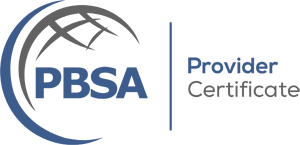Navigating Talent Acquisition in 2024

In today's ever-changing economic landscape, organizations face unprecedented challenges in talent acquisition. With the job market evolving rapidly, HR professionals must adapt their strategies to attract and retain top talent effectively. In this blog, we'll explore key strategies for improving talent acquisition processes in light of the current economic environment, drawing insights from industry experts and highlighting best practices for success.
Auditing the Hiring Process: The first step in improving talent acquisition is to conduct a comprehensive audit of the existing hiring process. By reviewing each stage of recruitment, from job posting to onboarding, HR professionals can identify inefficiencies and areas for improvement. This audit should include an analysis of key metrics such as time-to-fill, cost-per-hire, and candidate satisfaction. By pinpointing areas of weakness, organizations can implement targeted strategies to streamline the hiring process and improve overall efficiency.
Enhancing the Candidate Experience: In today's competitive job market, the candidate experience plays a crucial role in attracting top talent. HR professionals must prioritize the candidate experience at every stage of the recruitment process, from initial contact to final offer. This includes clear communication, timely feedback, and a seamless application process. By providing a positive candidate experience, organizations can differentiate themselves from competitors and attract top talent to their organization.
Proactive Pipelining and Talent Evaluation: In today's fast-paced job market, HR professionals must adopt a proactive approach to talent acquisition. This includes building talent pipelines and maintaining relationships with potential candidates, even when positions are not immediately available. By consistently evaluating and engaging with talent, organizations can quickly fill open positions and reduce time-to-fill. Additionally, HR professionals should prioritize ongoing talent evaluation and development, identifying high-potential candidates within the organization and providing opportunities for growth and advancement.
In 2024, background screening stands as a fundamental pillar of talent acquisition, integral to fostering trust, mitigating risks, and ensuring compliance in an ever-evolving hiring landscape. As organizations navigate complex regulatory environments and prioritize diversity and security, background screening serves as a critical tool for validating credentials, mitigating biases, and safeguarding against potential threats. Leveraging innovative technological solutions and standardized evaluation criteria, employers can streamline the screening process, expedite hiring timelines, and make informed decisions that align with their organizational values and long-term objectives. In essence, background screening in 2024 transcends its traditional role to become a strategic imperative, empowering organizations to build resilient, inclusive, and high-performing teams poised for success in the competitive global marketplace.
Navigating talent acquisition in today's economic environment requires a strategic and proactive approach. By auditing the hiring process, prioritizing the candidate experience, leveraging technology effectively, and adopting a proactive approach to talent pipelining, organizations can attract and retain top talent more efficiently. However, success in talent acquisition requires continuous improvement and adaptation to changing market conditions. By embracing these strategies and fostering a culture of innovation, organizations can position themselves for success in the competitive job market.
Posted by Morgan Mower
Morgan is the Co-Founder and CRO of Western Verify, and spends his free time hanging with his family or making a Sunday dinner brisket.

Morgan is the Co-Founder and CRO of Western Verify, and spends his free time hanging with his family or making a Sunday dinner brisket.


